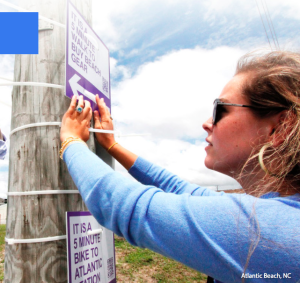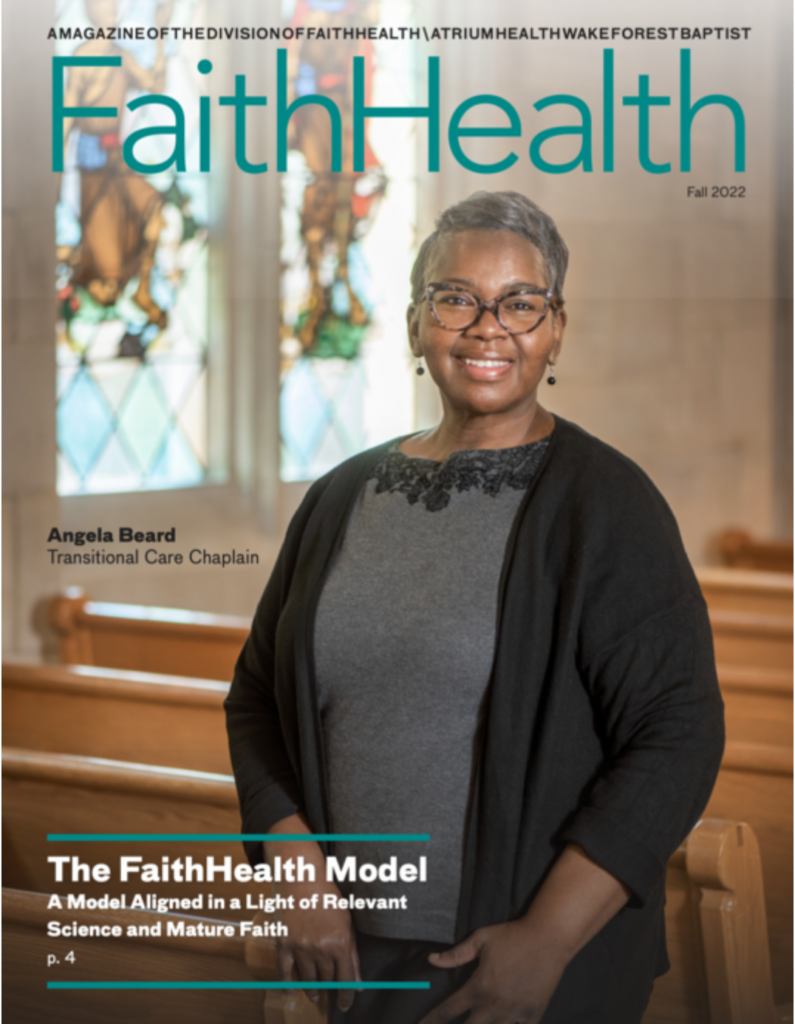
By Tom Peterson
Every once in a while an idea emerges that’s simple but brilliant. This one came from Raleigh, North Carolina. And it’s caught the attention of national, even international media, such as BBC News.
Urban planning student Matt Tomasulo wanted to see more people walking in Raleigh. So he created 27 signs that simply said, “It’s a __ minute walk to [destination].” The idea was based our tendency to overestimate how long it takes to walk somewhere. These first signs went up in 2012. Since then, Tomasulo founded Walk [Your City], and the signs have spread to 45 states and 38 countries.
Walking for Health
According to the CDC more than one-third of American adults are obese, and “obesity-related conditions include heart disease, stroke, type 2 diabetes and certain types of cancer, some of the leading causes of preventable death.” Annually, this adds an additional $147 billion in medical costs. Meanwhile, more than one-third of ![walk [your city]](http://www.faithhealthnc.org/wp-content/uploads/2014/07/walk-your-city-294x300.png) American children are overweight or obese, and one-third are on track to become diabetics. In Walkable City Jeff Speck makes a strong case for linking improved health to walkability:
American children are overweight or obese, and one-third are on track to become diabetics. In Walkable City Jeff Speck makes a strong case for linking improved health to walkability:
Over the past decade, there has been a series of studies that attribute obesity and its related illnesses directly to the automotive lifestyle and, better yet, to the automotive landscape. One effort found that for every additional five minutes Atlanta-area residents drove each day, they were 3 percent more likely to be obese. Another showed that drivers who switch to public transit drop an average of five pounds.
Comparison of walkable cities and auto-dependent suburbs yields some eye-opening statistics—for example, that transit users are more than three-times as likely as drivers to achieve their CDC-recommended thirty minutes of daily physical activity. Increasingly, it is becoming clear that them American health-care crisis is largely an urban-design crisis, with walkability at the heart of the cure.
Power to the Pedestrian
By getting more people to understand they can walk to that park or library, Tomosulo’s efforts show promise for improved health.
With a Kickstarter campaign to help other communities have their own signage campaigns, he developed an online process where people anywhere can write how many minutes it takes to walk to a certain destination. Walk [Your City] creates and ships quality signs that are placed on the streets. The signs can be scanned for directions.
Groups working for healthier communities may find this to be an inexpensive way to get results—get people onto the sidewalks. Cities can often take years to create such signage campaigns. Through Walk [Your City], citizens can create 50 signs in a fraction of the time for as little as a few hundred or thousand dollars, as opposed to a couple of million.
“Road signage has traditionally been expensive and car-centered, leaving walkers and bikers by the wayside,” says the organization. “Walk [Your City] lets anyone from citizens to corporations quickly and affordably promote healthy lifestyles, public safety, and human-centered transit.”
